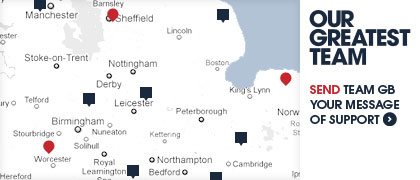Biathlon consists of eleven events on the Olympic program, five for men, five for women and a mixed relay. The sport features several distinct events: the sprint, pursuit, individual and relay. Competitors get five shots, either prone or standing, in each round of shooting to hit five targets. Target size varies depending on the shooting position - 115 mm (or the approximate size of a tennis ball) for standing and 45mm (a table tennis ball) for prone. The distance between the shooting position and the target is 50 metres.
Sprint (7.5km women / 10km men)
Competitors start at 30-second intervals and stop twice to shoot. There is one prone and then one standing round of shooting with five bullets each time. For each target missed, athletes take a lap around the 150m penalty loop. The top 60 finishers of this competition qualify for the pursuit.
Pursuit (10km women / 12.5km men)
In the pursuit, the 60 competitors start at intervals based on their finishing time in the sprint competition. Competitors have four rounds of shooting - prone, prone, standing, standing - during the course of the event. For each target missed, athletes take a lap around the 150m penalty loop.
Individual (15km women / 20km men)
Competitors start at 30-second intervals and have four rounds of shooting - prone, standing, prone, standing - during the course of the event. For each target missed, one minute is added to their total time.
Relay (4x6km women / 4x7.5km men)
The relay is a fast-paced team event in which four-person teams tackle four legs of 6km and 7.5km for women and men respectively. It begins with a mass start by the first skiers of their respective teams. Each team member has two firing sequences and is allowed three extra bullets (a total of eight) to hit five targets, yet must load the three extra bullets one by one. For each target left standing, competitors ski a lap around the 150m penalty loop. The team whose fourth athlete completes the course first is awarded the gold medal.
Mass start (12.5km women / 15km men)
The best 30 athletes contest the last event on the program, made up of all medallists in the individual, sprint and pursuit events, plus the leading competitor in the World Cup overall points table.
The athletes cover five circuits of 2.5km for women and 3km for men. They stop four times at the firing range, the first two prone, the second two standing, to hit five targets. For each target missed the athlete does a 150m penalty loop. The winner is whichever athlete passes the finishing line first. If a competitor is lapped they must withdraw from the race. The winning time is usually around 35 minutes.







